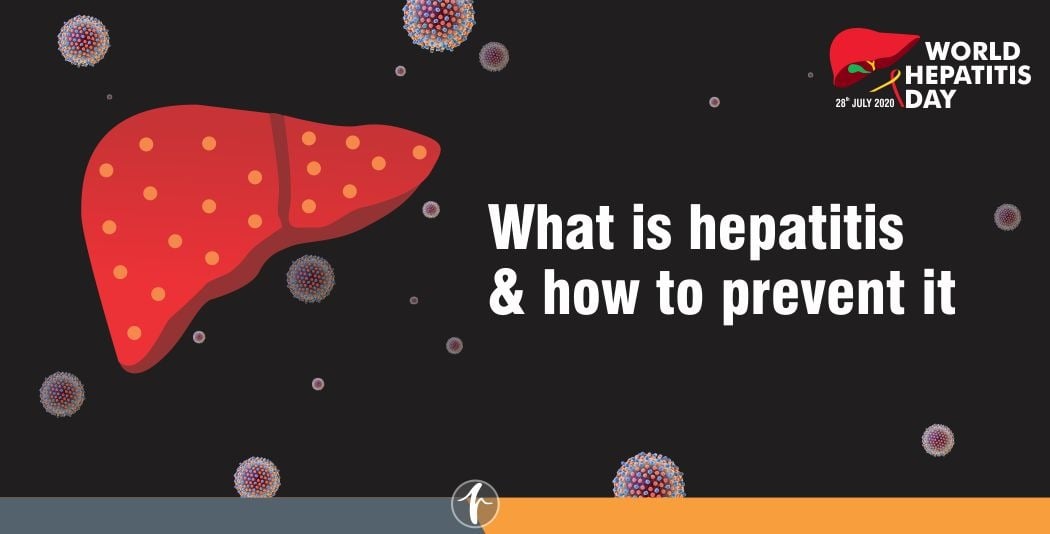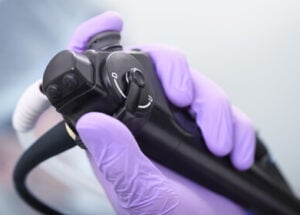Delving into the Depths of Necrosis
March 10, 2025

The medical word for your body tissue dying is necrosis. Your skin, organs, and bones are just a few of the body parts that may be impacted by tissue cell death. An injury, disease, infection, or insufficient blood supply to the tissues can all lead to necrosis.
What Does Necrosis Mean?
A disease or injury-induced process of premature or unnatural cell death is called necrosis. Necrosis is not internally regulated by body cells and can happen at any stage of the life cycle.
The body’s tissues die when they undergo necrosis. Numerous things, including radiation therapy, trauma, infections, and inadequate oxygen, might contribute to it. Based on distinguishing characteristics, such as appearance, necrosis has been divided into many categories. In addition to noticeable skin problems, symptoms include discomfort, edema, and fever. Surgery is usually the first step in treatment, which also includes medicine and maybe oxygen therapy.
Kinds of Patterns
Necrosis causes your body’s cells to change in shape and appearance. There are six ways that dead cells can appear. A few of these patterns are as follows:
- Coagulative Necrosis: For several days following death, dead cells with coagulative necrosis stay solid and have a normal appearance. Coagulation necrosis can result from oxygen or blood supply being cut off to any region of the body other than the brain.
- Liquefactive Necrosis: Within hours of death, dead cells that have liquefactive necrosis dissolve partially or entirely. After that, they become a viscous, thick liquid. When pus forms, the cells might occasionally seem creamy yellow. Liquified necrosis can result from infections or low brain oxygen levels.
- Fat Necrosis: When cells are injured, they release enzymes that cause them to become liquid. Calcium reacts with the liquid cells to form white, chalky deposits on the cells. Fat necrosis is most frequently caused by acute pancreatitis. Breast tissue is susceptible to it as well.
- Caseous Necrosis: The dead cells in caseous necrosis seem soft and whitish. Caseous means “cheese-like,” which explains why they’ve been compared to cheese. The infectious lung illness, TB, is the only one that causes caseous necrosis.
- Fibrinoid Necrosis: The dead cells in fibrinoid necrosis have a pink appearance and are unstructured. This is due to the fact that the walls of your blood vessels are leaking fibrin or plasma proteins. When an infection or autoimmune illness damages your blood vessels, it can lead to fibrinoid necrosis.
- Gangrenous Necrosis: When there is inadequate blood flow to the legs, gangrenous necrosis may occur, resulting in black and rotten skin. In some cases, it may also affect the fingers and arms.
Different Kinds of Necrosis
Your skin, organs, bones, and other tissues can all be affected by necrosis. Among the several forms of necrosis are:
- Avascular Necrosis: Numerous names exist for avascular necrosis. Avascular necrosis is also known as osteonecrosis, aseptic necrosis, and bone necrosis. When blood supply to your bone tissue is restricted, you get avascular necrosis. Your bones deteriorate and, finally, perish from a lack of blood supply. Avascular necrosis most commonly manifests as hip necrosis.
- Osteonecrosis of the Jaw: One kind of avascular necrosis is called osteonecrosis of the jaw (ONJ). A mouth (oral) disorder called ONJ is brought on by the death of cells in the jawbone. Jaw osteonecrosis can result in excruciating jaw and mouth pain. Furthermore, pus could be dripping from your jaw and mouth.
- Necrosis of the Pancreas: Acute pancreatitis can lead to the dangerous consequence of pancreatic necrosis. Your pancreatic tissue may perish if your pancreas’ blood supply is cut off. Your pancreas may get infected as a result. Organ failure may result from the infection’s spread into your blood (sepsis).
- Fat Necrosis of the Breast: Damage to fatty breast tissue can result in fat necrosis of the breast, a benign (noncancerous) disorder. Scar tissue typically takes the place of injured breast tissue in your body. When there is fat necrosis, some fat cells perish rather than producing scar tissue. As a result, an oil cyst—a pocket of oily fluid—is formed.
- Acute Tubular Necrosis: This is a kidney disease known as acute tubular necrosis (ATN) or tubular necrosis. Acute renal failure may result from injury to your kidneys’ tubule cells. The little ducts in your kidneys, called tubules, aid in filtering blood as it travels through the kidneys.
- Radiation-induced Necrosis: Rarely, high-dose radiation to the brain, head, or neck can cause radiation necrosis. It may cause brain tissue to permanently die.
- Renal Papillary Necrosis: When the renal papillae in your kidneys die, a kidney disease known as renal papillary necrosis develops. The tubes (ducts) that transport urine from your kidneys into your bladder are known as renal papillae.
- Gangrene (Skin Necrosis): When blood supply to internal organs or bodily tissues is impeded, skin necrosis (gangrene) results. Bacterial infections may potentially be the cause. Any area of your body may be affected, although it typically affects your hands, feet, fingers, and toes.
- Necrosis from a Spider Bite: If a spider bites you, you could develop spider bite necrosis. A bite from a spider may result in poison that erodes skin. But necrosis following a spider bite is not common.
- Pulp Necrosis: The soft tissue, or pulp, inside your teeth deteriorates and leads to pulp necrosis. There is a chamber that contains little bits of flesh inside each of your teeth. There are blood vessels and nerves within each chamber. The flesh may become infected and eventually die if a tooth is broken or decaying.
Symptoms
The location of the necrotic tissue in your body determines the symptoms of necrosis. The following signs may appear when necrosis is caused by a wound:
- Anxiety that feels worse than it should
- A fever that is higher than 100.4 degrees or chills
- Rapid heartbeat
- Numbness or discomfort around the wound
- Redness from the wound spreads quickly
- Warmth and pain in the vicinity of the wound
- Skin blisters
- A splintering feeling beneath the skin
- A whitish, foul-smelling fluid dripping from the wound
- Trouble thinking coherently
- Persistent perspiration
Treating necrosis symptoms as soon as you observe them is crucial.
Causes
When afflicted tissues do not receive enough blood and oxygen, necrotic tissue develops. Necrosis can be brought on by a variety of factors, including blood clots and blood vessel injury. Necrotic tissue can develop in an area as a result of wounds, infections, long-term illnesses, and poisons that reduce blood flow to that region. Some of the causes that can lead to necrosis are:
- Traumatic Injury: Traumatic injuries have the potential to harm blood vessels and stop the blood supply to the nearby tissue and bone areas. Traumatic injuries that cause necrosis can come from anything, such as falling off a ladder or being in an automobile accident. For example necrosis can occur electrical burn, frostbite, traumatic brain injury, chemical burn and radiation exposure.
- Infarction: When insufficient blood reaches the damaged area, infarction—or tissue death occurs.
- Infection: Necrosis can result from a diverse range of bacterial, viral, fungal, and parasitic illnesses. A little cut or scrape that becomes infected might cause necrosis. The areas where necrotic tissue caused by infection is most frequently observed are the hands, feet, and genitalia.
- Necrosis is more common in some infection types than in others. It is believed that the most prevalent necrotizing infection is caused by the bacteria Streptococcus group A.
- Certain Viruses are also known to cause necrosis like HIV, HSV-1, Vaccinia virus(similar to smallpox).
- Disease: Necrosis has been seen in some autoimmune illnesses, the most prevalent being systemic lupus erythematosus (SLE). Necrosis can also result from a number of other illnesses that damage blood vessels and prevent blood flow to bones and tissues, such as alcoholism, sickle cell disease, decompression disease, kidney failure, Cushing’s disease, and Gaucher’s disease.
- Toxins: Necrosis is known to be caused by chemical agents, including venom, poison, and several recreational drugs.Necrosis in the kidneys can be brought on by exposure to arsenic, a chemical present in rat poison and tainted groundwater.Necrosis can be inflicted by a variety of other animals, such as spiders, snakes, scorpions, and jellyfish.
Risk Factors
The following are the risk factors for developing necrosis:
- Age: As people age, they become more susceptible to conditions, including vascular disease and accidents, that can cause necrosis to develop. Your age is, therefore, one of the main risk factors for necrosis.
- Alcohol Abuse: You are at higher risk of developing necrotic tissue if you abuse alcohol. This is because alcohol is cytotoxic, which means it is harmful to your cells. Over time, excessive alcohol consumption can cause necrosis in the liver and kill off liver cells.
- Open Wounds: Your risk of infection and necrosis increases if you have an open wound, such as an abscess or surgical incision. Necrosis is also predisposed by trauma wounds and bug bites.
- Lupus: One frequent side effect of the autoimmune condition lupus is necrosis.
- Diabetes type I
- Vascular illness
- Persistent kidney failure
- HIV
Conclusion
Necrosis is brought on by death cells from a variety of sources, including illnesses, deficiencies, and accidents. It can be treated adequately by doing a thorough examination and determining the type of necrosis. So, it’s always best to listen to the doctor rather than make assumptions.
Frequently Asked Questions
1. What kinds of treatments are available for necrosis?
Yes, there are a number of drugs and treatments available to treat necrosis. However, it can be selected according to the damage’s cause and severity. A small percentage of them are medications that lower cholesterol levels, blood thinners, medication through food plans, rest periods that are restricted, physical therapy, etc.
2. Is necrosis the same as gangrene?
The death of bodily tissue is called necrosis. It happens when the tissue doesn’t receive enough blood flow. This may be the result of radiation, toxins, or injuries. It is impossible to undo necrosis.
Gangrene is the term for the disease that results from extensive tissue death due to a lack of blood flow.
3. What is the difference between necrosis and apoptosis?
Apoptosis is a programmed and orderly cell death that removes damaged cells without harming surrounding tissues, while necrosis is an accidental and uncontrolled cell death that spills cell contents, causing inflammation and tissue damage. Apoptosis helps maintain healthy cell populations, whereas necrosis often results from injuries, infections, or extreme conditions and may require medical attention.






